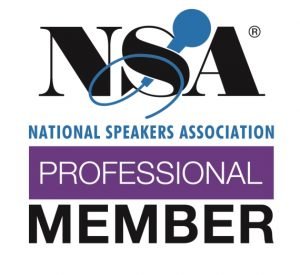Actually, it isn’t really a mystery. It just isn’t always done very well. We all know the words; plans, goals, mission statements, visions, values. In fact, they’ve become a leadership mantra which many can pronounce but few truly understand. That’s unfortunate because these words represent the very essence of leadership. How can anyone lead if they don’t have a firm grasp of these things?
Trying to lead without a good plan is tough. Trying to lead people who don’t understand the mission or the leader’s vision presents an impossible situation, and an organization or leader without defined values is destined to fail. In fact, I’ve come to believe that without a good plan a leader really isn’t a leader but a glorified manager. That may offend some, so let me explain. There are plenty of comparisons between manager and leader so I won’t add to that. My point is, to truly lead, the leader needs to have something he or she is leading to. Otherwise, he or she is just managing people.
I hesitate to use the words strategic planning because they have become cliché. But strategic planning is absolutely critical to success. Leadership is motivating people and causing them to do good, even great things, and I’ve found people will do good and great things if they know where they’re going and what leadership expects. The leader who presents a clear, understandable plan will have the best success.
So what’s a good plan? It starts with a mission statement; short, to the point and easy to remember — your organization’s compass. Everything else you do must be referenced to this statement. It isn’t sloganeering, but the mission statement does provide a rallying point for the organization and a focus for all other efforts.
A good plan involves more than just a vision and mission. There are other critical parts as well. We hear a lot about values; religious values, family values, good values, bad values. Everyone has values; that set of core beliefs that drive their actions. As a leader, it is vital to ensure everyone understands the organization’s values. Leaders must also ensure they live and reflect those values.
Experience has taught me that goal setting is one of the most talked about yet misunderstood leadership tasks. I’ve seen good and bad but the most successful goals I’ve seen are those that coincide with the organization’s mission and values. The continuity of the plan is what makes it work. When employees are told to work towards goals that are not related to what they know is the mission, they either get confused, or lose motivation.
There’s something else that’s important in planning. If there weren’t any problems, life would be easy. Since none of us live in a world without any problems, it’s critical in planning to recognize them. I call these the speed bumps and roadblocks of planning. It’s important not only to recognize these problems, but make sure everyone else is aware of them and, more importantly, make sure your employees know you, their leadership, is aware of them.
One more thing about planning. Keep it simple. I’ve seen some plans that go absolutely nowhere because they are too complex. Implementing the plan may be complicated and require some serious technical work, but the basic plan needs to stay simple.
About 20 years ago, I was fortunate to study under a leader who really understood strategic planning. With his basics, adapted to each unique situation, I’ve had great success creating plans for a variety of organizations.
 Bob Mason is dedicated to leadership development. He works with companies to solve problems by helping supervisors and managers become more effective leaders leading more productive teams. He is a professional speaker and author of Don’t Worry, You Can Do This: What New Supervisors and Managers Need to Know About Leadership; The Art of Not Motivating: How Leaders Can Succeed by Understanding the True Nature of Motivation; Balancing the Generations: A Leader’s Guide to the Complex, Multi-Generational, 21st Century Workplace; and Planning to Excel: Strategic Planning That Works.
Bob Mason is dedicated to leadership development. He works with companies to solve problems by helping supervisors and managers become more effective leaders leading more productive teams. He is a professional speaker and author of Don’t Worry, You Can Do This: What New Supervisors and Managers Need to Know About Leadership; The Art of Not Motivating: How Leaders Can Succeed by Understanding the True Nature of Motivation; Balancing the Generations: A Leader’s Guide to the Complex, Multi-Generational, 21st Century Workplace; and Planning to Excel: Strategic Planning That Works.
A 30-year career in the U.S. Air Force exposed him to great leaders and leadership opportunities such as command of four squadrons, including the Air Force’s largest munitions squadron. He has studied leadership extensively, but more importantly has been there, working with real people, making hard decisions, and experiencing the results.
Contact Bob at Bob@BobMasonSpeaker.com or 505-453-5266




